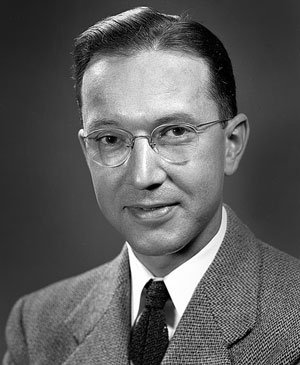A History of Video Games: The Grandfather of Gaming
Video games as we know them have now existed for over 50 years. It’s a well known fact that the release of the Magnavox Odyssey in 1972, the first majorly available home video game console, started a cultural phenomenon that has yet to be extinguished (with a notable exception in the 1980’s but that is a topic for another day). But there is a lesser known fact about gaming that many seem to gloss over. Ralph Baer and Nolan Bushnell may claim to be the fathers of gaming and in almost all aspects they are correct, but there was one man who came before them that gets less credit than he deserves for his contribution to the gaming sphere. In order to tell this story correctly we have to go back to World War 2 and the development of the Atomic Bomb.
William Higinbotham - Brookhaven National Institute
William Higinbotham was a physicist born in Connecticut in 1910. During the height of the second World War, William was working at the Los Alamos Laboratory as head of the electronics group. During his time at Los Alamos, Higinbotham and his team created the ignition switch for the first atomic weapons as well as measuring instruments that would be applied to the device and a radar that would be used on the B-28 bomber. Because of this work at Los Alamos, William would later be named the Head of the Instrumentation Division at the Brookhaven Institute which annually held a exhibition for the public to explore the Institute.
In 1958, Higinbotham had an idea for the upcoming public exhibition that would be a little different than their usual exhibits. Typically there were stationary, non-interactive displays during this time, but William wanted something that the people could play with. He had a great idea for a game that could be programmed onto an oscilloscope screen that would use the technology that had been developed to track missiles in flight using realistic trajectory. Within a few hours, Higinbotham had developed the idea and in the next few weeks his team had created a prototype of a game of tennis on the oscilloscope display. He named it “Tennis for Two”. It had simple controls featuring a dial that could change the trajectory of the dot on the screen and a button to hit said dot back across the dividing line. By today’s standards, it’s rudimentary, but the effect it would have on the cultural landscape was profound.
William Higinbotham passed away in 1994 and I would be remiss if I didn’t touch on the work that he wanted to be remembered for. He was never one to deny his contribution to the history of video games, but for the majority of his life he worked toward nuclear nonproliferation and the elimination of atomic energy being used for destructive purposes. As one of the founders of the Federation of American Scientists, he worked diligently to ensure that the world would never again see the use of nuclear arms.
-Andrew
(c) 2018 Sachyn Mital

